2000
Type of resources
Available actions
Topics
Keywords
Contact for the resource
Provided by
Years
Formats
Representation types
Update frequencies
Scale
Resolution
-
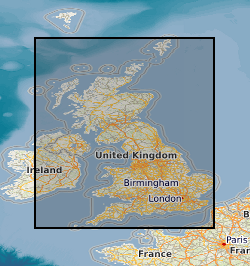
The BGS Geochemical Baseline Survey of the Environment (G-BASE) was the national strategic geochemical mapping programme in Great Britain. The project set out to establish the chemistry of the surface environment by the collection and analysis of stream sediment, stream water and soil samples. Beginning in the late 1960s in northern Scotland and moving southwards across the country, the primary focus was mineral exploration, however, the project quickly developed to address important environmental concerns. The final G-BASE samples were collected in southern England in 2014. The outputs from the G-BASE project provide an invaluable, systematic baseline of geochemical information for Great Britain, serving as a marker of the state of the environment against which to measure future change. Stream water samples were collected at each drainage site. Four different water samples were collected routinely: two filtered waters (for major and trace elements) and two unfiltered waters (for pH, conductivity and alkalinity). Samples were collected for approximately 85% of Great Britain, but a wide range of analytes were only determined from the Wales and Humber-Trent atlas areas southwards. Stream water pH, conductivity and alkalinity were determined in the field. In the later stages of the programme, stream water samples from high order streams were analysed by ICP-AES/MS for 27 elements (Al, B, Ba, Be, Ca, Cd, Co, Cr, Cu, Fe, K, La, Li, Mg, Mn, Mo, Na, Ni, P, Pb, S (as SO42-), Si, Sr, V, Y, Zn and Zr) and by quadrupole ICP-MS for 24 trace elements (Ag, Al, As, Ba, Be, Cd, Ce, Co, Cr, Cu, La, Li, Mo, Ni, Pb, Rb, Sb, Sn, Th, Tl, U, V, Y and Zr). Some samples were analysed by ion chromatography (IC). Automated colorimetric methods were used to determine Cl and NO3-, and an ion selective electrode (ISE) technique was used to determine F. Waters were also analysed for non-purgeable organic carbon (NPOC) to determine dissolved organic carbon content. All samples were routinely analysed for pH, conductivity and bicarbonate. Much of the UK coverage also includes uranium and fluoride analyses. For more information about accessing these samples and their analytical results, contact BGS Enquiries (enquries@bgs.ac.uk).
-
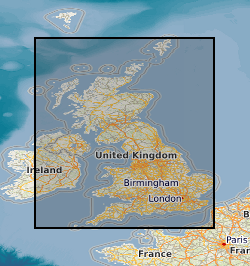
The Regional Geochemical Atlases are the principal hard copy product of the British Geological Survey G-BASE (Geochemical Baseline Survey of the Environment) project. The majority of atlases are for stream sediment, with data on stream water and soil included where available. Separate stream sediment, soil and stream water atlases have been published for Wales. This dataset relates to the hard-copy atlases, which are available for Shetland, Orkney, South Orkney and Caithness, Sutherland, Hebrides, Great Glen, East Grampians, Argyll, Southern Scotland, Lake District, NE England, NW England and N Wales and Wales. The atlases were issued between 1978 and 2000. Each atlas comprises a set of separate interpolated heat-maps for each analyte, as well as descriptive and interperative information. The atlases provide an invaluable, systematic baseline of geochemical information for Great Britain, serving as a marker of the state of the environment against which to measure future change. Digital atlases and map products are also available for the Clyde Basin, central England, the London region and south-west England. National-scale digital atlas products are also available.
-
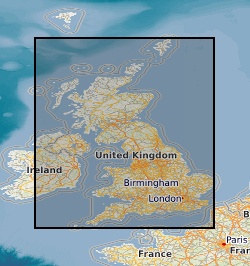
The BGS Geochemical Baseline Survey of the Environment (G-BASE) was the national strategic geochemical mapping programme in Great Britain. The project set out to establish the chemistry of the surface environment by the collection and analysis of stream sediment, stream water and soil samples. Beginning in the late 1960s in northern Scotland and moving southwards across the country, the primary focus was mineral exploration, however, the project quickly developed to address important environmental concerns. The final G-BASE samples were collected in southern England in 2014. The outputs from the G-BASE project provide an invaluable, systematic baseline of geochemical information for Great Britain, serving as a marker of the state of the environment against which to measure future change. Deep soil samples (also known as profile soil samples) were taken from depths of between 35 cm and 50 cm at densities of 1 sample per two square kilometres (rural / regional areas) and 4 samples per square kilometre (urban areas). The G-BASE profile soils were generally sieved to 150 microns before analysis and determined by XRF for some or all of: Ag, As, Ba, Bi, Br, Ca, Cd, Ce, Co, Cr, Cs, Cu, Fe, Ga, Ge, Hf, I, K, La, Mg, Mn, Mo, Nb, Ni, P, Pb, Rb, Sb, Sc, Se, Se, Sn, Sr, Ta, Te, Th, Ti, Tl, U, V, W, Y, Zn and Zr. Since 2003, for both regional and urban sampling, deep soil samples and shallow soil samples were routinely collected from the same sites, but only the shallow soil samples were submitted for chemical analysis. The deep soil samples were archived in the National Geoscience Data Centre. For more information about accessing these samples and their analytical results, contact BGS Enquiries (enquries@bgs.ac.uk).
-
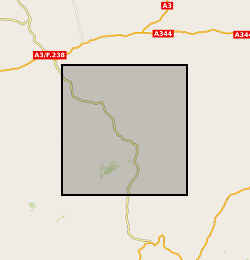
Oju/Obi is a remote part of Eastern Nigeria. There are severe water shortages during the 4-5 month dry season. The hydrogeology of the area is complex, and groundwater is difficult to find. In an attempt to understand and quantify the available groundwater resources within the area, DFID commissioned BGS from 1997 – 2000 to carry out a hydrogeological review of the area and devise appropriate and effective methods for siting wells and boreholes assessing groundwater resources and how best these resources could be developed. The field study involved the collection of time series data including groundwater chemistry and rainfall Cl along with mineralogical information. These results are being used by WaterAid, Local and regional Government to help local communities develop sustainable water supplies.
-
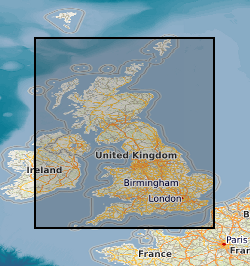
This layer of the map based index (GeoIndex) is a map based index of the National Well Record Archive. This index shows the location of water wells along with basic information such as well name, depth and date of drilling. The index is based on the collection of over 105,000 paper records of water wells, springs and water boreholes. Geological information, construction details, water quality data and hydrogeological data may also be available for some water wells. The amount of detail held on individual sites varies widely and certain fields will have an 'unknown' value where the paper records have yet to be checked for their content. The zero values for the depth represent those for which the depth has yet to be entered into the database from the paper records.
-

Predicting oil production from chalk reservoirs relies on quantifying contributions from fracture and matrix porosity, which change during compaction. Cl isotopes in water characterise fluid transport processes. Chalk matrix microporosity and fractures will give different values. We will combine two novel methods, trace water extraction from dry oil and Cl isotopes to characterise porosity from produced fluid. High pressure lab. experiments carrying fracture/matrix porosity in cores will give characteristic brine geochemistry related to poroperm to calibrate field values. We will compare fluid derived porosity regime with values measures on field core. Porosity changes from geochemistry will be compared with compaction in the field.
-
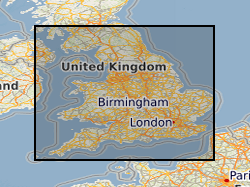
This layer of the map based index (GeoIndex) shows the availability of 1:63360 scale geological maps. The maps are available for most of England and Wales and show early geological mapping covering the OS Old Series one inch map sheet areas.
-
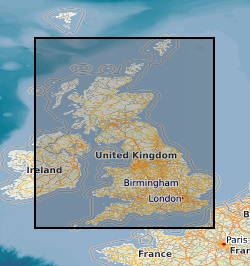
This layer of the map based index (GeoIndex) shows the location of available 1:10000 or 1:10560 series paper geological maps. Since the 1960s the standard large scale map for recording geological information has been the Ordnance Survey (OS) quarter sheet, covering a 5km by 5km area. The maps themselves are supplied in different formats depending on their age and the method of compliation or reproduction used. Only the latest and most up-to-date version is listed.
-
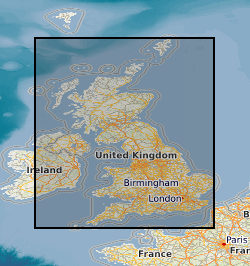
The UK Onshore Geophysical Library was established in 1994 in conjunction with the Department of Trade and Industry (DTI) and the UK Onshore Operators Group (UKOOG). The Library manages the archive and official release of seismic data recorded over landward areas of the UK. By agreement with the DTI and HMSO, the Library operates as a registered charity, funded by revenues raised from data sales and donations, with the long term objective of bringing all available UK onshore digital seismic data into secure archival storage, whilst providing efficient access to all interested parties. BGS has access to the data at cost of copying only for science budget work. Data index on the BGS Geoscience Data Index.
-

A digital elevation model of the base of the Holocene for the Mersey estuary. The model was created as part of the Estuaries Research Programme (EMPHASYS).
 NERC Data Catalogue Service
NERC Data Catalogue Service